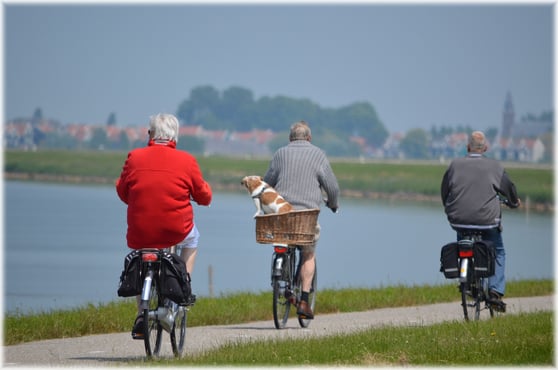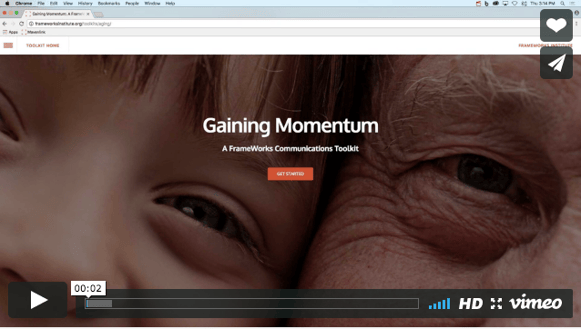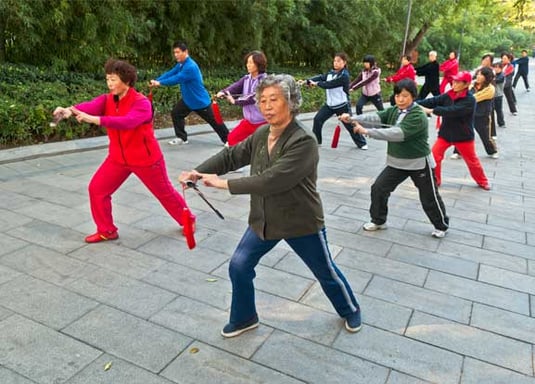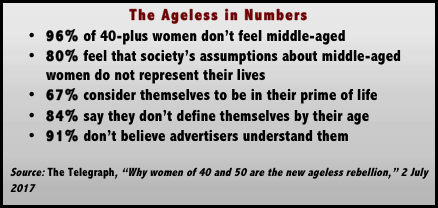Will you live to be 100? I am on the fence about wanting to live that long, unless I can be pretty sure I’ll be relatively healthy for the duration. Health span and longevity are the golden tickets in aging research,  according to a panel convened recently at the Milken Institute Global Conference.
according to a panel convened recently at the Milken Institute Global Conference.
Moderated by Francis Collins, director of the National Institutes of Health, the panel—made up of luminaries in geroscience research—gave the audience updates on recent promising studies. Among the most interesting—and slightly scary—research that is giving them reason to think that extending not only lifespan but also health span is within reach—and within a reasonable timeframe. It may not happen in the near future, but is definitely on the horizon.
From telomeres and mitochondria to senescent cells, mouse and primate studies have shown that umbilical cord blood extended the lives of mice, while Metformin, a diabetes drug that’s been around for a decades, has been shown to prevent the onset of diabetes and cardiovascular disease, among other things.
According to Elizabeth Blackburn, Nobel Laureate and president of the Salk Institute, targeting and minimizing the “big killers of humanity” (the diseases that often come with aging) is the key to extending health span. “The conditions we die of, we really care about those, because these affect our health span,” she said.
The National Academy of Medicine is so committed to finding the key to extending the health span it has created an initiative around it. According to the group’s website, the Longevity Grand Challenge is aimed at inspiring and incubating “transformative ideas through challenge prizes and awards, expert guidance, a roadmap for policymakers and public engagement.”
So how does all this relate to aging services? There are obvious correlations, such as how much longer such breakthroughs will extend human lifespan and its impact on health care systems and housing, of course. It is worth noting, however, according to one scientist, when the time comes, humans will likely get about two additional years out of it. That century-long lifespan may still be reserved for those with the right genetics but the science and research seems to be inching closer to it.
While there are some very interesting discoveries that point to “hacking the aging code,” the panelists also made note of the fact that good old-fashioned exercise, diet, and genetics still play a large role in human longevity.
If you want a focused approach to figuring how health longevity affects your business— facilitated by experts in the senior living field—contact Quantum Age today.
 those of us steeped in this field take notice. To begin, suggesting that the human condition of living is considered a disease is a bit provocative, if not ignorant. In addition, the moderator of said panel followed the introduction with, “eventually the disease of aging is going to kill us,” which I assume at this point was meant to be merely bombastic, especially since the panelists were thoughtful, engaging humans, all of whom were clearly living with this aging “disease.”
those of us steeped in this field take notice. To begin, suggesting that the human condition of living is considered a disease is a bit provocative, if not ignorant. In addition, the moderator of said panel followed the introduction with, “eventually the disease of aging is going to kill us,” which I assume at this point was meant to be merely bombastic, especially since the panelists were thoughtful, engaging humans, all of whom were clearly living with this aging “disease.” mainstream media is beginning to ponder the collateral issues and recognize that there are legit news stories to be told.
mainstream media is beginning to ponder the collateral issues and recognize that there are legit news stories to be told. older people are not respected. More than 83,000 people in 57 countries took part in the survey, which assessed attitudes to older people across all age groups. Interestingly (and sadly), the lowest levels of respect were reported in high-income countries.
older people are not respected. More than 83,000 people in 57 countries took part in the survey, which assessed attitudes to older people across all age groups. Interestingly (and sadly), the lowest levels of respect were reported in high-income countries. how the rest of the world is responding to their aging populations, it gives us a perspective on how other countries treat their elders, and it helps us better understand how to maneuver in the longevity economy.
how the rest of the world is responding to their aging populations, it gives us a perspective on how other countries treat their elders, and it helps us better understand how to maneuver in the longevity economy.



 that the next two decades will bring on a surge of older adults—to the tune of nearly 79 million people over the age of 65 in the United States alone. But did you know that only 1 percent of the current U.S. housing stock offers the five design elements that would allow older adults to live comfortably? Yes, that’s 1 percent of homes that have zero-step entrances, single-floor designs, wide halls and doorways, electrical controls reachable from a wheelchair, and lever-style handles on faucets and doors, according to recently released study by Harvard University.
that the next two decades will bring on a surge of older adults—to the tune of nearly 79 million people over the age of 65 in the United States alone. But did you know that only 1 percent of the current U.S. housing stock offers the five design elements that would allow older adults to live comfortably? Yes, that’s 1 percent of homes that have zero-step entrances, single-floor designs, wide halls and doorways, electrical controls reachable from a wheelchair, and lever-style handles on faucets and doors, according to recently released study by Harvard University. This of course is not rocket science—you can do the math. The point is that the opportunities driven by these groups, including the products and services they purchase and the additional economic activity this spending generates will extend into the latter part of this century.
This of course is not rocket science—you can do the math. The point is that the opportunities driven by these groups, including the products and services they purchase and the additional economic activity this spending generates will extend into the latter part of this century.